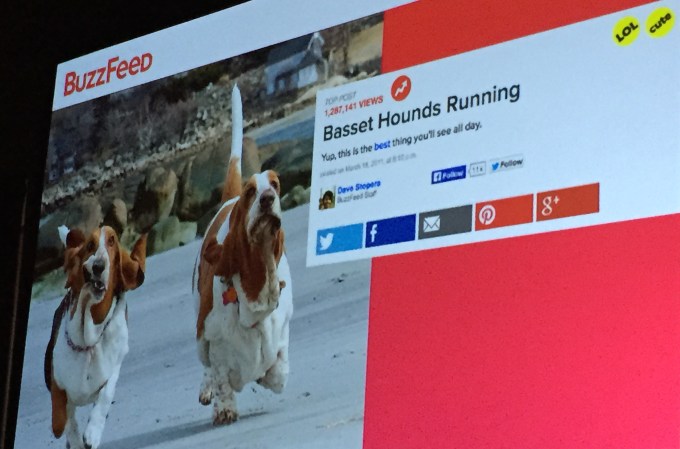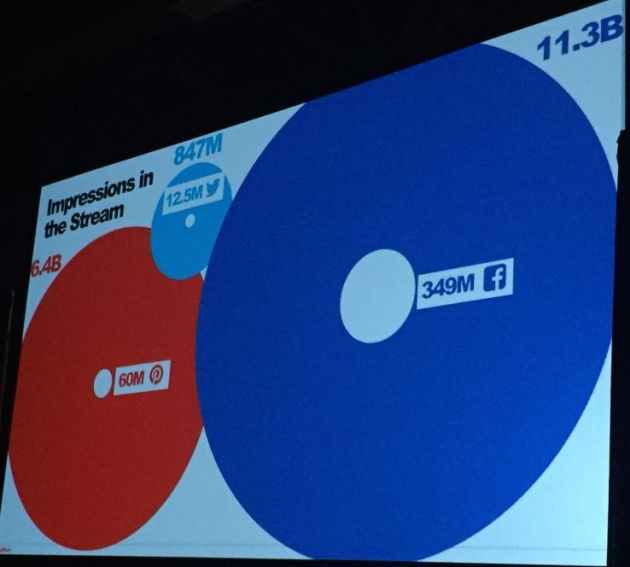
“Because so many publishers build their businesses on banner ads, they have to get people back to their site to make money” says BuzzFeed CEO Jonah Peretti. But that misses much of the value of social media. “You should be using this distribution channel to show them content, not just a pointer to some other space.”
During his talk to a massive SXSW crowd, Peretti explained how he’s building BuzzFeed into a globe-spanning business with over 200 million unique monthy visitors and over 900 employees.
At its core, BuzzFeed’s strategy is about distributing emotion.
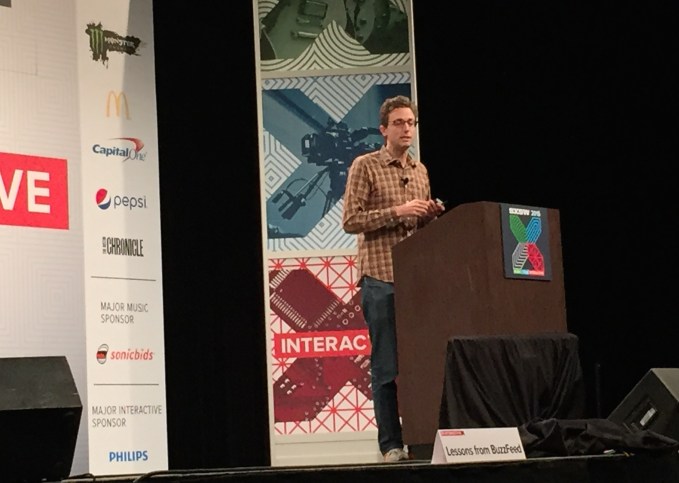
Peretti demonstrated just how many more people BuzzFeed reaches by delivering its content directly through social networks rather than just pumping out links. In referral traffic per month, he says BuzzFeed receives 12.5 million hits from Twitter, 60 million from Pinterest, and 349 million from Facebook.
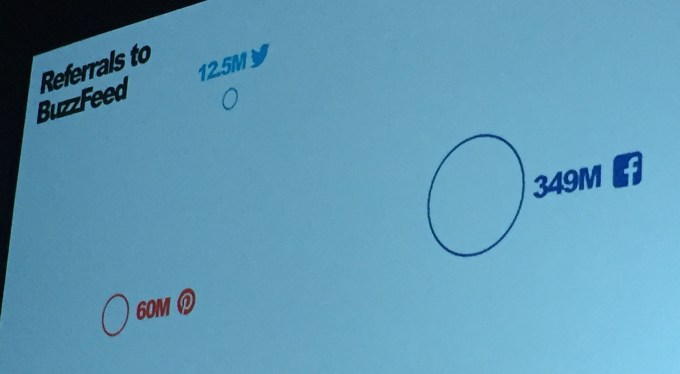
Monthly referral traffic from links clicked is relatively small…
But Peretti said showing people links in hopes of luring them somewhere else “feels a little bit outdated”. He explained “The numbers are actually really small compared to people who saw our content in the stream.” In terms of impressions, BuzzFeed’s content saw 847 million views on Twitter, 6 billion on Pinterest, and a whopping 11.3 billion on Facebook.

…compared to the massive reach of BuzzFeed’s content when pushed off-site
“If you can push the content out to the edges, you can potentially reach a much larger audience” say Peretti. Of course, that won’t necessarily make business sense unless a media property has a similar revenue model to BuzzFeed. But maybe everyone should be moving in that direction.
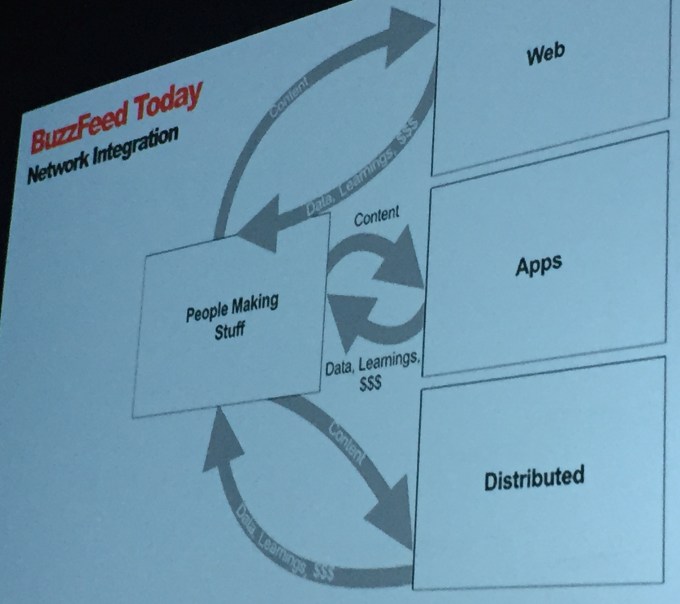 The startup earns money by charging brands for native ads that it designs to look like BuzzFeed stories, and then helping distribute them. It doesn’t need page views on every one of its own stories. It just needs to learn what people like, make sponsored content that matches that, and get lots of people to see it wherever they are.
The startup earns money by charging brands for native ads that it designs to look like BuzzFeed stories, and then helping distribute them. It doesn’t need page views on every one of its own stories. It just needs to learn what people like, make sponsored content that matches that, and get lots of people to see it wherever they are.
As more media properties evolve towards a native ads model, getting clicks becomes less important. Meanwhile, building a social network audience and becoming known for great content becomes increasingly critical.
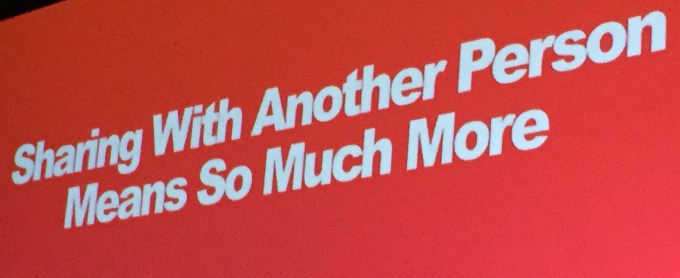
But creating viral content isn’t about getting people to share information, it’s about sharing emotion.
The “Share Statement” is what BuzzFeed internally calls the words you use to describe things you post on social media, like its articles. Peretti says the “Share Statement is “often more important than the headline” because it’s says why, not just what, they’re sharing.
BuzzFeed closely watches these Share Statements to learn what its audience wants to see. Peretti concluded “BuzzFeed doesn’t make a product. We’re a service that keeps getting better at creating content over time.”
